About
Meet your host, Russ Emerson.
Geek
Network Engineer, CCIE certified in ISP-Dial. Author of technical documents such as
- Modem Router Connection Guide
- Internetworking Troubleshooting Handbook, (Chapter 16 and Chapter 17)
- And a whole host of other useful (if you’re a network engineer) documents.
Linux afficionado – though by no means an expert.
- SVLUG, Installfest
Coordinator (1998-2000)
Veteran
U. S. Army, 1986-1992
- 102nd MI Bn (CEWI), Korea
- 107th MI Bn (Light), Fort Ord, CA
- Language school… and others…
I had a lot of interesting times in the Army. Got to play with some Real Man toys –
The TACJAM:
The AN/MLQ-34 “TACJAM” was a tactical radio jamming system, formerly used in the Military Intelligence battalions of some of the “heavier” divisions of the U. S. Army, such as the 2nd Infantry Division in Korea, where I served for 2½ years.
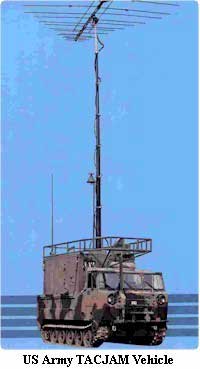
Much of my time in Korea was spent on, in, under, and with the TACJAM.
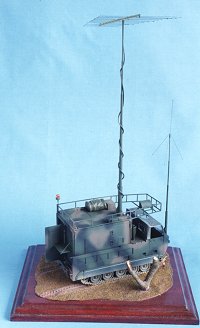
The TACJAM has, to the best of my knowledge, been replaced in frontline service.
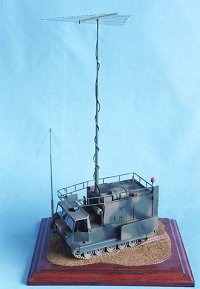
It’s a big sucker. The carrier vehicle is the M1015, an upgraded version of the venerable M548. Mounted in/on the cargo bed is a large generator to power the electrical equipment shelter in which the crew operates. Add a huge dang telescoping-mast-mounted Logarithmic Periodic Antenna, and you have some serious radio power.
AN/MLQ-34 on display at (I believe) Tobyhanna Army Depot:
The AN/TRQ-32(v):
|
The “Turkey 32” is a truck-mounted radio direction-finding system. Back in the late ’80s and early ’90s, it was mounted on the back of a CUCV (basically, a mil-spec Chevy pickup with a power take-off bolted to the transmission.) Nowadays, of course, it goes on a Humvee. The very efficient air conditioner mounted on the electrical equipment shelter made this a good vehicle to be near in hot weather – good place to keep the
|
The AN/PRD-11:
| The PRD was a man-portable radio direction-finding system (well, more like 3- or 4-man portable system) used by Low-Level Voice Intercept (LLVI) teams in very close proximity to the front lines – with no guarantee whose side of the lines you’d be on, either. The picture below doesn’t show it, but that antenna stands about 9 feet tall and weighs about 50 pounds. So for a typical “insertion” mission (that is, you hike to your site or get dropped off by helicopter), you have each team member carry 1 of the system components, batteries, a three-day supply of food and water, personal weapons, cold-weather gear if necessary, and so on. As the biggest guy in my team, I carried the antenna. And as the team leader, I also carried the radio. So before I had my personal gear, I was already carrying about 80 pounds. Add the batteries, etc, and I often had a load upwards of 150 lbs on my back. So I guess it’s no wonder I still have knee and back problems…. |
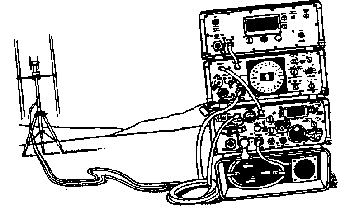

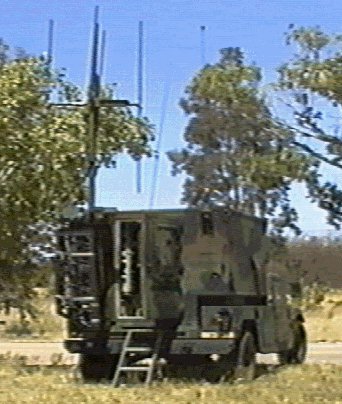
cipla tadalafil
cipla tadalafil
cheap viagra with prescription
cheap viagra with prescription
levitra 10 mg filmtabletten vardenafil
levitra 10 mg filmtabletten vardenafil
Thus Spake Russ
https://www.studiosambo.com/2016/02/13/scoperte-le-onde-gravitazionali-progetto-virgo-di-federico-sambo-architetto-eco-consulting-e-lenzi-consultant/
Thus Spake Russ
https://www.melaniegillman.com/commissionsillustration/
Thus Spake Russ
https://www.matwestukltd.com/headlines/matwest-has-moved-offices/
white clumpy discharge after using metronidazole gel reddit
white clumpy discharge after using metronidazole gel reddit
lisinopril nursing implications
lisinopril nursing implications
ciprofloxacin hcl
ciprofloxacin hcl
side effects metformin
side effects metformin
stopping prednisone after 5 days
stopping prednisone after 5 days
provigil tinnitus
provigil tinnitus
is keflex a strong antibiotic
is keflex a strong antibiotic
what does nolvadex do for bodybuilders
what does nolvadex do for bodybuilders
doxycycline para que sirve
doxycycline para que sirve
what type of pain does lyrica help
what type of pain does lyrica help
does cephalexin treat uti
does cephalexin treat uti
amoxicillin rash adults
amoxicillin rash adults
what does valacyclovir treat
what does valacyclovir treat
what are the long-term side effects of trazodone
what are the long-term side effects of trazodone
Thus Spake Russ
https://kaydok-facade.fr/contactez-nous/
Thus Spake Russ
https://www.abi97-dzg.de/adm_program/modules/guestbook/guestbook.php?headline=Gästebuch
Thus Spake Russ
http://liucheng.name/guestbook/
Thus Spake Russ
https://atelier-courchevel.com/rustic-collection-work-process-4/
Thus Spake Russ
https://www.giservicescambodia.com/product/solar-projection-lamp-model-g9900/
Thus Spake Russ
https://monodrama.sk/this-is-the-first-awesome-post-4/
Thus Spake Russ
https://zangiabad.ir/??????-???-??-??-????-???-??-?????-?????/
Thus Spake Russ
https://cellos-sportandstyle.de/sportday/
Thus Spake Russ
https://www.crinj.com/2019/11/07/avaya-engage-2020/
Thus Spake Russ
https://defensaycamping.cl/lanzamiento-de-nuestra-web-defensa-y-camping/
Thus Spake Russ
https://mihonan.co.il/????-???????-??-????-????-??-??/
Thus Spake Russ
https://www.lespoumpils.com/sponsors-battut/
Thus Spake Russ
https://babyrental.net/2018/10/15/?????????????????????/
Thus Spake Russ
https://www.wurzel-werk.eu/2015/08/25/hallo-welt/
Thus Spake Russ
https://touchagues.fr/ateliers-dart-pour-enfants-2017-sur-les-traces-du-peintre-louis-touchagues/
Thus Spake Russ
https://kubet88.place/du-doan-xo-so-mien-nam-tai-kubet-huong-dan-tu-a-den-z/
Thus Spake Russ
https://nexloan.com.au/online-dating-safety-ideas/
Thus Spake Russ
https://mandyjoyeria.com/markup-html-tags-and-formatting/
Thus Spake Russ
https://www.dbprojects.com.au/tahei/
Thus Spake Russ
https://www.vivanews.gr/??????-??-??????-28-????-?-????????????/
Thus Spake Russ
https://petsoasisuae.com/three-dog-adoption-tips-from-a-shelter-volunteer/
Thus Spake Russ
https://fitmentlab.net/cbc-performance-e36-m3/
Thus Spake Russ
https://clicks2leads.com/soportesTD/feeds/redir_merkal_cpa_ok.php?url=http://batmanapollo.ru/??????-???????-???????????/
Thus Spake Russ
https://jaroslavsvarc.cz/zazitky/
Thus Spake Russ
https://tomfit.nl/blog/2016/01/10/qa-doelen-stellen/
Thus Spake Russ
https://bellavistacondominiums.com/gmedia/floorplans_and_features_list-1-jpg/
Thus Spake Russ
https://apiformazione.it/il-controllo-di-gestione-e-la-contabilita-analitica-due-strumenti-essenziali-per-il-buon-funzionamento-di-unazienda/
Konya SEO Uzman?
Konya SEO Uzman? cok iyi harika biri super bayildimmmmmmmmmm bu ne boyle yaaaa